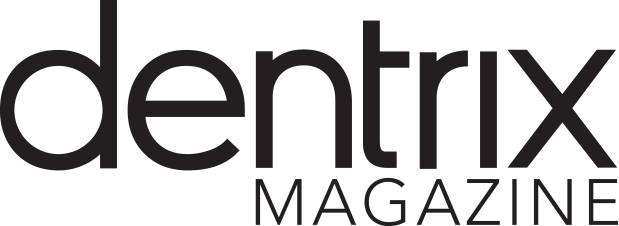Discover the five key performance indicators that reveal the health of your practice.
Updated 6/30/20
The best way to be successful is to maximize the productivity and efficiency in your practice. How? By understanding and managing the key performance indicators (KPIs) in your practice on a regular basis.
Just like your blood pressure, body weight, and cholesterol numbers indicate your physical health, your KPI numbers indicate the financial health of your practice.
Monitoring your KPIs and taking action to improve them can help you eliminate waste, optimize production, improve efficiency, and drive higher profitability. Mastering the metrics that matter gives your practice a competitive edge.
Which KPIs matter most to practice profitability? Henry Schein has researched this question extensively. After measuring dental practice success for more than 20 years, we recommend dentists focus on these five KPIs: active patients, active patients in hygiene, production, accounts receivable, and schedule optimization.
KPI #1: Active Patients
The Pulse of Your Practice
Your active patients–the number of patients who visited your office in the past 18 months–is the #1 KPI because it affects the current and future cash flow of your practice.
Think of your active patients as the pulse of your practice. A steady increase in active patients from month to month is a sign of a healthy, growing practice. If your active patient base shrinks, overall cash flow will soon shrink as well. Discover the five key performance indicators that reveal the health of your practice.
Your practice management software can help you track your active patients. Once you identify your active patient base number, start working to stabilize and increase it.
Set monthly, quarterly and yearly goals to grow your active patient base. Involve your team in growing this number by encouraging follow-up visits and new patient referrals.
How you enter a patient into your database for the first time can help you track the source of your new patients. Take the time to enter new patient information accurately, including specifying the referral source. Over time you can see where your best referrals are coming from and nurture those sources.

What to Do
If your number of active patients is declining from month to month, it’s time to take action.
To maintain a healthy patient base, the average practice should see between 20 and 25 new patients per month. If your active patient base isn’t growing, try this:
- Follow up on patients who are overdue in hygiene.
- Ensure the patients coming in today are set up correctly in the scheduling system so their continuing-care future due dates are accurate.
- Track where new patients are coming from and focus on the marketing activities that yield the greatest results.
KPI #2: Active Patients in Hygiene
Your Primary Growth Source
Your active patients in hygiene–the number of patients with a hygiene appointment in the past 12 months–is a crucial metric for two reasons:
- It forecasts the number of active patients you will have over the next 12 months.
- It is the primary source of growth and production for your practice.
Forecasting your active patients in hygiene lets you know if your practice is on track to achieve your financial goals. If your active patients in hygiene start to decline, you can take corrective measures to bring the numbers up before another six months go by. Ensuring that patients are scheduled to return for their hygiene visits every six months also helps maintain and increase your active patient base (see KPI #1).
What to Do
Look at the number of patients seen in hygiene and the number of patients who have scheduled return appointments in the next six months. If the number of hygiene re-appointments falls below 85 percent of the active patients in hygiene number, it’s time to take action. If your hygiene patients aren’t reappointing, try this:
- Use the Continuing Care module to track the due dates and last visit dates of your hygiene patients.
- Set up standard routines to encourage and remind patients to schedule hygiene appointments before their due date.
- Attach continuing care to each patient coming through your practice.
KPI #3: Production
A Healthy Hygienist/Doctor Mix
Tracking the production numbers for hygienists and for doctors separately lets you know who is doing the work, what the work is, and how much revenue your practice can expect from each provider.
A healthy mix of hygiene and doctor production is vital for practice profitability. An average production mix of 65—75 percent for doctors and 25—35 percent for hygiene is ideal.
The Dentrix Practice Advisor Report can help you track production by provider, overall production, case acceptance, outstanding treatment plans, reappointment rates and other areas that affect practice profitability.
What to Do
If hygiene production falls to 15—20 percent of your total practice production, it’s time to take action. If your production numbers are down, try this:
- Discuss production numbers in your daily huddle meetings.
- Ask the team for ideas on how each team member can improve case acceptance, patient care and overall production.
- Help patients overcome financial worries, fear of invasive procedures, and other barriers to treatment by openly discussing their concerns.
KPI #4: Accounts Receivable
Easy to Measure, Hard to Do
The accounts receivable management KPI shows whether your practice is actually making money. Profitable practices set a goal to collect at least 98 percent of their total adjusted production (gross production minus adjustments).
For example, if your monthly gross production (the sum of the fees you normally charge patients) is $80,000, and your monthly adjustments (discounts and insurance write-offs) are $16,000, your total adjusted production is $64,000. Your collection goal for that month would be $62,720 (98 percent).
The way you manage your accounts receivable determines your profitability. While this may seem obvious, many practices fail to compare their outstanding A/R to their production each month.
The Practice Advisor can provide valuable insight into accounts receivable so you can take the appropriate measures to get paid. Monitor the following A/R figures at least once a month:
- Account balance aging (30, 60 and 90 days)
- Pending insurance claims aging
- Daily over-the-counter collections
- Total collections
- Totals by provider
The sooner you can address a collections issue, the more likely you’ll get paid. Outstanding balances beyond 30 days should be targeted first. Once a balance ages beyond 90 days, you lose 7 percent of the value of that balance every month. By the time the balance ages 12 months, your practice has lost more than the balance is worth.
What to Do
If your monthly collections rate is lower than 98% of your adjusted production totals or if you have outstanding balances that are over 30 days past due, try this:
- Provide third-party financing options to help your patients afford necessary treatment.
- Put a written financial policy in place and make sure your patients understand it and your team reinforces it.
- Help your patients pay on time by setting up electronic payment plans.
- Flag balances that are more than 60 days overdue and call these patients ASAP.
- File insurance claims electronically.
KPI #5: Schedule Optimization
The Fuller the Better
Schedule optimization is the cornerstone of an efficient and profitable practice. Managing your schedule effectively can minimize team stress, increase patient satisfaction, and maximize production. Properly setting up your Appointment Book affects several key metrics of practice success, including:
- Average hourly production
- Production by procedure
- Unfilled hours
- Scheduled hours
- Number of broken appointments not reappointed
- Revenue lost from broken appointments
Unfilled hours in your schedule directly affect your bottom line. Losing one hour of hygiene time per day over a 210-day year can cost your practice more than $30,000 in a year. Losing one hour of dentist time per month can cost your practice more than $144,000 in a year.
What to Do
Unfilled provider time means lost production. Monitor your schedule regularly, and when you see that providers have open time in the schedule, use the tools in Dentrix find patients to schedule. To help fill unscheduled hours, try this:
- Use the ASAP List to find patients who want to come in sooner than scheduled.
- Use the Open List to find patients with flexible schedules.
- Use the Unscheduled List to track patients who cancel or miss appointments and contact them to reschedule when you have openings.
- Reach out to patients with postcards, emails, and text messages to remind them that they have unscheduled treatment plans and encourage them to schedule.
Next Steps: Implement and Manage KPIs
Analyzing your practice performance based on specific numbers gives you a better understanding of your practice’s strengths, weaknesses, and opportunities.
In Dentrix, for example, you can run the Practice Advisor Report to see your KPIs at a glance. This report shows your active patient base, active patients in hygiene, practice production, accounts receivable, schedule optimization, and many more indicators of your financial health. You can also compare your current performance to past months or year-to-date numbers.
The Practice Advisor Report compares your practice’s KPI statistics to industry-standard benchmarks. When your KPIs fall below the benchmarks, the report offers recommendations to help you improve your profitability.
If you want more personalized recommendations specific to the problems in your practice, you can also sign up for the Dentrix Profitability Coaching program. Whether you’re new to Dentrix or you’ve been using the software for years, Dentrix Profitability Coaching can help you implement and manage KPIs for greater practice efficiency and profits. To learn more about Dentrix Profitability coaching, visit www.Dentrix.com/Coach.
You’ve worked hard to establish your practice. By mastering the metrics that matter you can ensure it remains a healthy, growing practice. Make a regular checkup of your KPI “vital signs” a method for your success.
Learn More
To learn more about the Dentrix Practice Advisor Report, see the Practice Advisor Report topic in Dentrix Help or read Measuring Your Practice’s Financial Health.
Get a free 30-minute Practice Advisor assessment to learn the next steps to increase your profitability. Visit https://www.dentrix.com/products/dentrix-profitability-coaching/.
By Tammy Barker, Senior Product Manager
Originally published in Dentrix Magazine, Fall 2015







